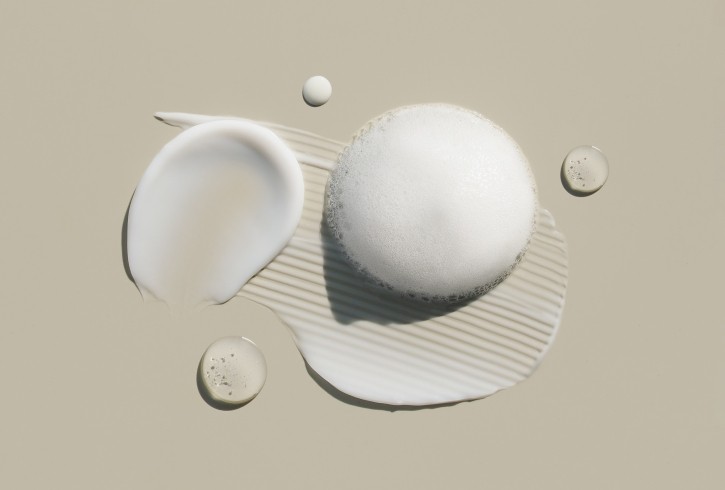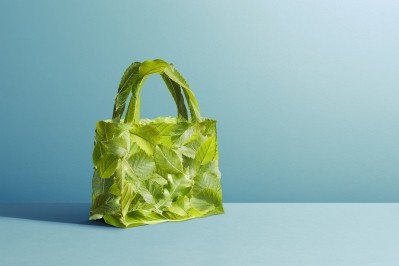Green global startup CleanHub releases Clean Beauty Survey data

Global tech startup CleanHub has released the results of a survey conducted to assess consumer sentiment towards clean beauty trends in cosmetics and personal care. The company, who partners with a variety of businesses, including beauty brands Sunday Riley, Noughty, Blume, and Derma E., utilizes AI technology to keep “plastic out of the sea by implementing waste recovery where there is none…to track and trace collection, and is verified according to ISO standards, meaning brands can be confident in their impact.” said Nikki Stones, Vice President of Marketing at CleanHub.
We spoke to Stones for her insights to learn more about the survey, including key takeaways from the data results, recommendations for how beauty brands can leverage the survey findings to better meet consumer demand for clean beauty products, and predictions for the clean beauty trend in 2024.
Survey methodology & key takeaways
To conduct the Clean Beauty Survey, CleanHub’s “research targeted people who consider themselves the primary decision-makers when purchasing personal and healthcare products,” shared Stones. The data was “was captured through an online survey that included fifteen questions about clean beauty trends,” she explained, and “a total of 523 people between the ages of 18 and 65 responded to the survey.”
Regarding takeaways from the survey’s findings, the data’s key determination was “that consumers want change from brands,” Stones said. “The data shows that buyers are looking for brands that are limiting their impact on the planet,” she added, and “some are even willing to pay more for this.”
These sentiments are clearly reflected in the data itself, she continued, as “63% of respondents deem clean beauty as either ‘extremely important’ or ‘very important’ when selecting cosmetics,” and “81% of our sample group believe that brands should actively reduce plastic packaging.”
Additionally, she highlighted, “70% of respondents delve into a company's eco-credentials,” and “over half [of the survey’s respondents] doubt the authenticity of brands’ clean beauty claims.” These results further emphasize “brands’ need to listen to their audience, and look into sustainable avenues where possible,” Stones stated.
Leveraging data findings
To apply these survey determinations in better understanding and serving consumer demand for clean beauty products, companies across the cosmetics and personal care product supply chain can first “understand that consumers are demanding change,” said Stones. “Once they’ve seen first-hand what consumers have to say,” she added, “it’s time to act.”
One action that companies in the beauty industry could take would be “doing a life cycle change/analysis of products and packaging to understand what changes can be made to become more circular,” she recommended. Another option would be to explore packaging alternatives.
“Packaging is often made up of multi-layered materials to ensure that they can protect products from any outside elements that might damage or contaminate them,” she explained, “whilst also marketing the product itself.” Unfortunately, “this combination makes it extremely difficult for recycling facilities to separate and reuse the materials,” and therefore, “switching from multi-layered to mono (single) -material plastic can significantly increase packaging circularity,” she said.
Another option for brands to become more sustainable would be to consider a refillable product model, as “refillable cosmetics cut down on packaging waste because they encourage consumers to reuse the same container,” Stones shared. In this way, brands can not only reduce “plastic waste but also enhance customer loyalty as they repurchase the same product,” she stated.
A third option would be for brands to consider plastic offsetting initiatives. “Our research shows that 64% of shoppers expect brands to offer better schemes for removing plastic packaging,” said Stones, and “plastic offsetting is an immediate way to support communities globally while reducing plastic waste in highly polluted areas.
For example, one way to implement this type of initiative would be that “for every purchase, cosmetic brands invest in initiatives working to extract plastic from the environment, [which] allows beauty brands to contribute actively to reducing the plastic they produce while demonstrating a sustainable commitment to their customers,” she illustrated.
A final option for beauty brands to become more sustainable is to eliminate excess packaging entirely. “Manufacturers tend to seal many products with a layer of plastic or pack them in cardboard boxes,” said Stones, and while “sometimes this is for hygiene purposes, in a lot of instances, excess packaging is nothing more than aesthetics, and so can be easily eliminated.”
Regardless of how a company begins to become more sustainable, it’s essential to communicate those efforts clearly, Stones concluded. By sharing “more about their business values and practices, and how their products are made/sourced,” as well as “by being transparent and clear about their sustainable commitment, brands enable consumers to make informed and conscious choices,” she said.
Clean beauty in 2024 and beyond
Looking ahead, “the clean beauty industry has been growing significantly over the past few years,” shared Stones, “and is estimated to grow by a further 14% in the next decade.” Therefore, she continued, “as the rise of the conscious consumer continues, industries have no choice but to adopt more eco-friendly practices.”
Considering that “demand will only get stronger as more Gen Z and Alpha buyers enter the marketplace, a strong sustainability strategy will be critical for brands to future-proof their business,” she added. With an estimated one-third of the US beauty market now labelled clean, said Stones, “we can expect to see the rest working to become more sustainable” soon.
To do so successfully, she concluded, “brands need to be transparent and back up their claims,” as “consumers are understandably on high alert for greenwashing and will avoid brands that pay lip service to sustainability.”
Regarding CleanHub specifically, the company plans to “continue to monitor consumer and brand sentiment in this area,” Stones shared. Additionally, in the future, CleanHub is “also planning on gathering data on other topics around plastic, and potentially focusing some research on other industries,” she said.









